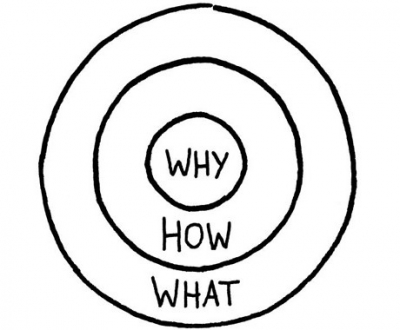 Framing information and using the Iron Triangle – time, cost and scope – can be instrumental in gaining support from senior executives for your projects.
Framing information and using the Iron Triangle – time, cost and scope – can be instrumental in gaining support from senior executives for your projects.In their 2002 book, “Selling Project Management to Senior Executives: Framing The Moves That Matter,” authors Janice Thomas, Ph.D., Connie Delisle, Ph.D., and Kam Jugdev, Ph.D., highlight the challenges that project managers face when trying to sell a plan to senior management. The primary issue lies in communicating the benefits of the assignment and approaching the situation with the right frame.
“Framing” is the perspective we bring to decision-making based on past experiences. In her renowned book on the subject, “The Power of Framing: Creating the Language of Leadership,” Gail Fairhurst, Ph.D., says that when we are communicating through frames, we are shaping the reality of a situation.
But framing can have a negative effect when it’s not used with careful thought, so it’s important to choose the proper frame when promoting a project to upper management. By presenting the vital information in a concrete and practical way, project managers can use the Iron Triangle of time, cost and scope to prove to executives how the company will improve its bottom line.
Breaking Through Their Barriers
From CEOs to CFOs, top-level executives are concerned with maintaining profitability. Therefore, they are often wary of using valuable resources like time and workflow in projects that have a potential for failure. When it comes to pitching assignments to them, executives need to understand the positive outcomes that project management will provide the business.
In their book, Thomas, Delisle and Jugdev explain that project management is becoming increasingly important to organizations that are looking to grow within their sectors. Project managers have to present the main components of the project in the right context while managing the realistic expectations of their executives.
The steps of persuasion
When framing a project management pitch for senior leadership, persuasion is an effective tool. In “The Necessary Art of Persuasion,” author Jay Conger, D.B.A., senior research scientist at the University of Southern California’s Center for Effective Organizations, underscored the efficacy of persuasion and discussed four distinct steps that project managers should use for framing discussions with upper management:
- Establish credibility
- Identify common ground and use it to frame goals
- Reinforce position with language and evidence
- Connect emotionally.
 Previously, we wrote about how resolving conflict often has the side benefit of building a cooperative bond — even loyalty — between the factions. As each side gains a deeper understanding of the others’ viewpoints, respect builds and morale improves. Cooperative, low stress interactions, create a fertile environment for productive brainstorming, ultimately boosting the health of your organization.
Previously, we wrote about how resolving conflict often has the side benefit of building a cooperative bond — even loyalty — between the factions. As each side gains a deeper understanding of the others’ viewpoints, respect builds and morale improves. Cooperative, low stress interactions, create a fertile environment for productive brainstorming, ultimately boosting the health of your organization. In Part 3 of this series, we’ll examine the five conflict styles that help people understand their own responses as well as diffuse conflict with others. Specifically, we’ll look at the five conflict styles that Kenneth W. Thomas and Ralph H. Kilmann identified and can be assessed in the Thomas-Kilmann Conflict Mode Instrument (TKI), a globally accepted, widely used diagnostic assessment for resolving conflict.
In Part 3 of this series, we’ll examine the five conflict styles that help people understand their own responses as well as diffuse conflict with others. Specifically, we’ll look at the five conflict styles that Kenneth W. Thomas and Ralph H. Kilmann identified and can be assessed in the Thomas-Kilmann Conflict Mode Instrument (TKI), a globally accepted, widely used diagnostic assessment for resolving conflict. I aspired to broaden my career and went back to school for a Masters in Leadership Development about 12 years ago. Through a confluence of introductions, opportunities and also being an adjunct instructor at Drexel University, I joined one of my cohort’s businesses, Merit Career Development. Initially, I began helping them with a new branding initiative, but in an “Ah Ha” moment we realized that I’d likely be a strong trainer for Merit, too. We were right. I have been running corporate trainings for Merit now for five years and I love it! But here’s the surprise: one of my favorite courses to facilitate, is Conflict Management (followed closely by Critical Thinking & Decision-Making.)
I aspired to broaden my career and went back to school for a Masters in Leadership Development about 12 years ago. Through a confluence of introductions, opportunities and also being an adjunct instructor at Drexel University, I joined one of my cohort’s businesses, Merit Career Development. Initially, I began helping them with a new branding initiative, but in an “Ah Ha” moment we realized that I’d likely be a strong trainer for Merit, too. We were right. I have been running corporate trainings for Merit now for five years and I love it! But here’s the surprise: one of my favorite courses to facilitate, is Conflict Management (followed closely by Critical Thinking & Decision-Making.) The CrossFit program was developed to enhance an individual’s competency at all physical tasks. Athletes are trained to perform at multiple, diverse, and randomized physical challenges. This type of fitness is demanded of military and police personnel, firefighters, and many sports requiring overall physical prowess.
The CrossFit program was developed to enhance an individual’s competency at all physical tasks. Athletes are trained to perform at multiple, diverse, and randomized physical challenges. This type of fitness is demanded of military and police personnel, firefighters, and many sports requiring overall physical prowess. How can crossfit training your mind benefit you in your workplace? Cross-functional training has many benefits for organizations as well as employees. At an organizational level, cross training skillsets help safeguard the organization against widening skills gaps. Organizations that cross-train employees across a range of functions put themselves in a good position to prevent sudden shortfalls and manage surges in specific areas when there is a spike in demand. On an individual level, cross training enables employees to explore and assess alternative interests and abilities. It also enables managers to identify and nurture employees who show exceptional talent in a particular function. Cross-training yourself to learn new skills, can increase your employability and enable you to stay relevant.
How can crossfit training your mind benefit you in your workplace? Cross-functional training has many benefits for organizations as well as employees. At an organizational level, cross training skillsets help safeguard the organization against widening skills gaps. Organizations that cross-train employees across a range of functions put themselves in a good position to prevent sudden shortfalls and manage surges in specific areas when there is a spike in demand. On an individual level, cross training enables employees to explore and assess alternative interests and abilities. It also enables managers to identify and nurture employees who show exceptional talent in a particular function. Cross-training yourself to learn new skills, can increase your employability and enable you to stay relevant.
 Why do we work at Merit:
Why do we work at Merit: From emotions to the time of day, it is often the little things that impact our ability to make a swift and accurate decision. A range of factors can compound the challenges in making good choices, both directly and indirectly.
From emotions to the time of day, it is often the little things that impact our ability to make a swift and accurate decision. A range of factors can compound the challenges in making good choices, both directly and indirectly. Although the wrong frame in the wrong situation can lead to bad decisions, using the right frame can be beneficial in closing sales with prospective customers.
Although the wrong frame in the wrong situation can lead to bad decisions, using the right frame can be beneficial in closing sales with prospective customers.